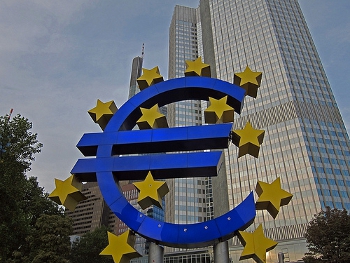European banking union is the most important regulatory project in the European Union (EU). It is based on three pillars: common banking surveillance, rules for the execution of banks, and a legal framework for national deposit insurance systems. The single resolution mechanism (SRM) will be established in 2016 and should serve to execute big banks.
European governments promise to execute indebted banks in the Euro zone without taxpayer’s money. First, the European Central Bank (ECB) has to declare the Non-Survivability of a bank. Then, a newly established execution committee decides about the details of execution and forwards its decision to the European Commission (EC). The EC can reject the proposal, but can also be overruled by the national finance ministers. Thus, the danger that the EC will be established as the highest execution authority is averted. Nevertheless, the details will be negotiated on the basis of a complicated intergovernmental treaty – some surprises could occur.
The guarantees of the national governments for deposits up to 100,000 euros will be preserved. It is estimated that those national guarantees cover up to 95 percent of all deposits in the EU. Beyond that, shareholders, creditors and those with deposits exceeding 100,000 euros are liable (bail-in). The taxpayer’s money could only be held liable after shareholders and big creditors write off 8 percent of total assets or convert it into equity capital. It is an open question whether this liability cascade will work.
In addition, European banks have to pay in roughly 55 billion euros in national rescue funds. Until these rescue funds are established, the European rescue fund ESM has to provide money. Only the country of origin can apply for funds from the ESM and has to act as a guarantor for it. Nobody knows whether this will avoid a frivolous use of the ESM as a recapitalisation source for struggling banks. The entry into the socialisation of debts is still possible, because national rescue funds have to be converted into a European execution fund after 10 years. Furthermore, the planned 55 billion euros is not sufficient to rescue large banks. Moreover, shareholders and big creditors try to escape from the bail-in obligation.
The mistakes of the European banking union are obvious: first, monetary policy and surveillance will be conducted in one institution. The ECB will become the superpower that decides which bank will close and which one will receive cheap central bank money. The ECB will also decide which country will be able to finance itself to what interest rate. Second, there is already a European surveillance authority – the European Banking Authority (EBA). The EBA can supervise British banks, the ECB could not. Of course, the British banks could opt to be supervised by the ECB. In fact, British banks have already declared not to use this option. And London is the financial heart of Europe.



















No comments
Be the first one to leave a comment.